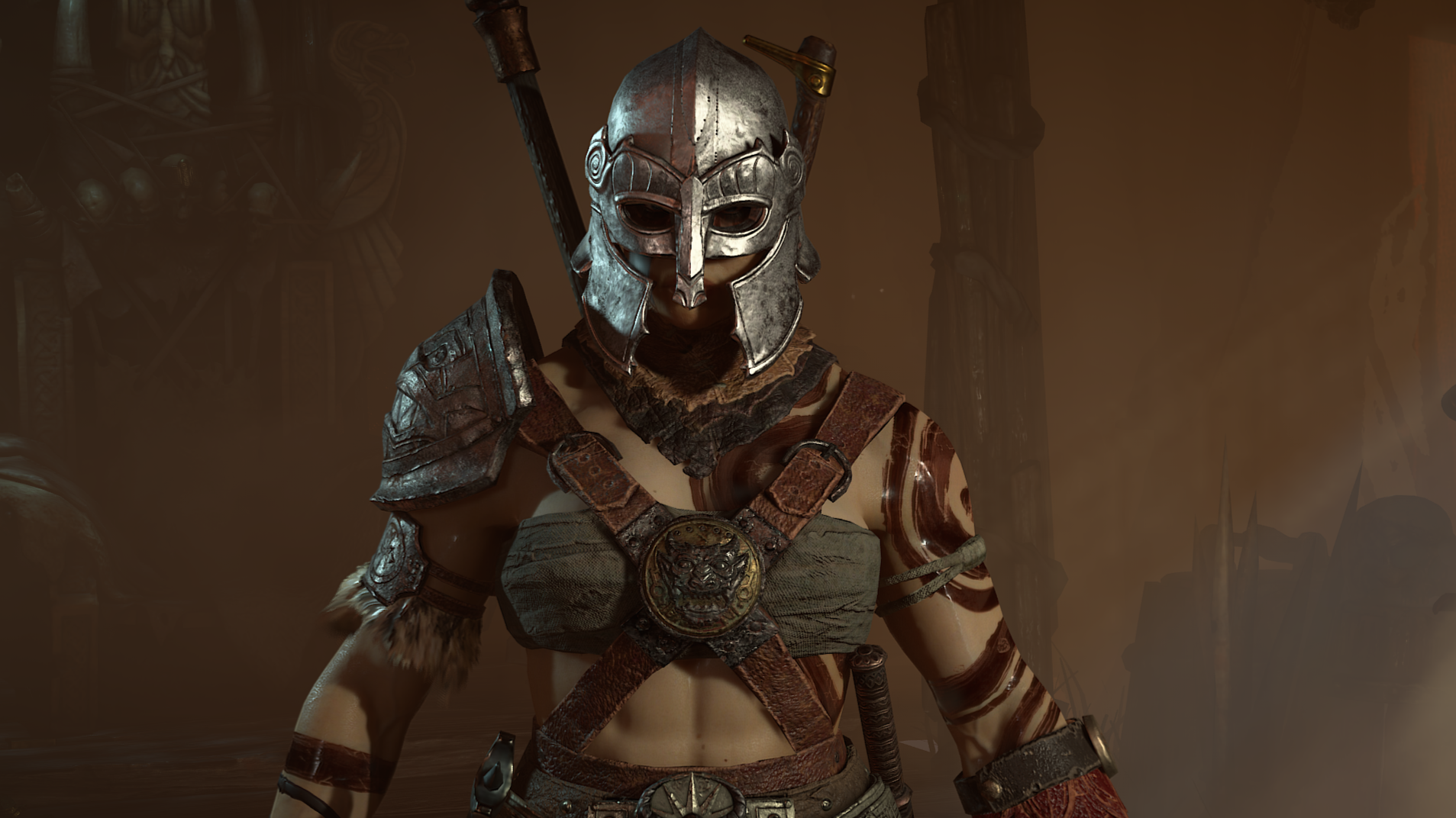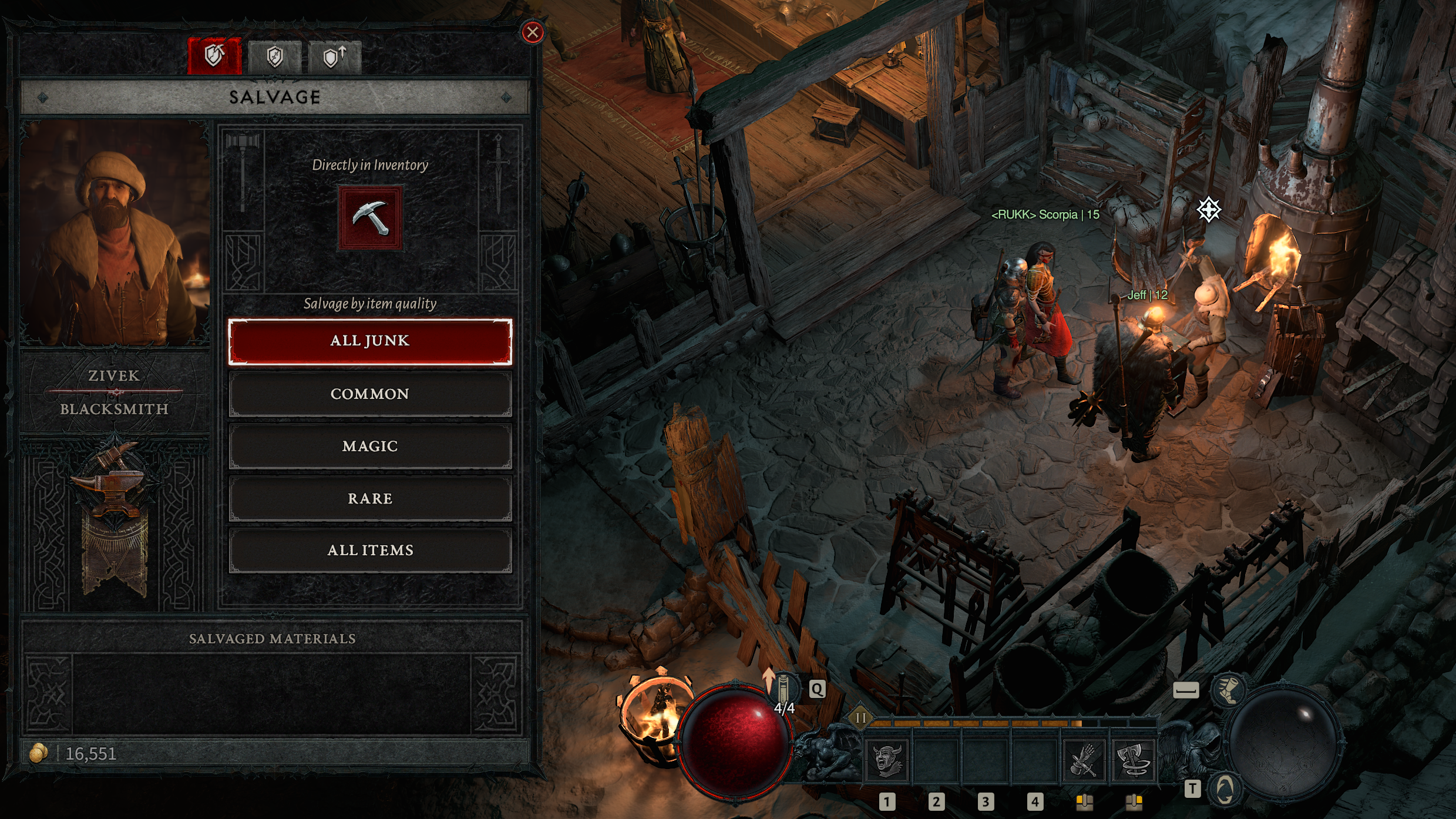Diablo 4: How to salvage gear and items
Why not turn those junk items into useful materials?

Like many other hack-and-slash ARPGs, Diablo 4 showers you with weapons, armor pieces, and other types of gear as you explore the demon-infested world of Sanctuary. However, while some of these may be an improvement over what you already have equipped, there's a good chance that many of these drops will be worthless junk.
These items, along with old gear you don't use anymore, will quickly clutter up your valuable inventory space if you don't stay on top of them. Therefore, finding a good way to get rid of them is important. Trading junk to vendors is an option, but you'll already get plenty of gold from slaying enemies and completing quests, and you won't even get that much money by selling them, anyway. Instead, it's highly recommended to salvage your old and useless gear for a few unique benefits. In this guide, we'll go over everything you need to know about salvaging gear, including why it's worth doing, where you can do it, and how the salvaging process works.
What is gear salvaging in Diablo 4?
In Diablo 4, salvaging gear is a powerful mechanic you should engage with frequently. This is because by salvaging items, you'll recycle them into valuable crafting materials like rawhide, leather, and chunks of metal ore. You'll need these resources to upgrade your weapons and armor to improve their damage and protection, and while they can be acquired when smashing containers open or battling enemies, these drops are fairly infrequent. Salvaging, though, gives you a consistent and reliable way to stockpile these materials.
In most cases, salvaging also unlocks the appearance of the item you recycled in Diablo 4's transmog system, allowing players to customize their character's look extensively. By visiting the Wardrobe in major cities like Kyovashad (look for the wardrobe icon on your map), you can freely change your equipped weapons and armor to look like pieces of gear you've salvaged before. Note that when salvaging, items with a pickaxe symbol on their icon indicate that you'll unlock their appearance after you recycle them.
How to salvage gear and items in Diablo 4
To salvage their spare gear, players will need to go to a Blacksmith in one of Diablo 4's major cities. In Act 1 of the game, they'll need to visit Zivek, the Blacksmith in the center of Kyovashad located right next to the city's weapon and armor shop. Note that this location can only be reached after the game's Prologue is completed.
While talking to a Blacksmith, select the first tab at the top of their vendor screen to bring up the Salvage menu. There, you'll be presented with a few different options:
- All Junk: Salvage all gear in your inventory manually marked as Junk.
- Common: Salvage all Common (white) items in your inventory.
- Magic: Salvage all Magic (blue) items in your inventory.
- Rare: Salvage all Rare (yellow) items in your inventory.
- All Items: Salvage everything in your inventory except Legendary (orange) items.
Alternatively, players can select the red pickaxe button above these options and then select specific items in their inventory to salvage them individually. Salvaging items this way takes longer, but if you just want to recycle a few specific gear pieces or you'd prefer to reduce the risk of accidentally salvaging something you want to use, it's the best option.
All the latest news, reviews, and guides for Windows and Xbox diehards.
Diablo 4 is out now and is available on Xbox Series X|S, Xbox One consoles, Windows PC, PS5, and PS4. It's one of the best Xbox games for fans of dungeon crawlers and hack-and-slash combat, and we've been having an absolute blast with it.
Diablo 4: Ultimate Edition
The Ultimate Sacrifice from your wallet to our Blessed Mother, the Ultimate Edition of Diablo 4 comes with a bunch of cosmetics, the Premium Battle Pass and 20 tier skips for you to enjoy.
Buy on: Xbox | PC (Battle.net)

Brendan Lowry is a Windows Central writer and Oakland University graduate with a burning passion for video games, of which he's been an avid fan since childhood. He's been writing for Team WC since the summer of 2017, and you'll find him doing news, editorials, reviews, and general coverage on everything gaming, Xbox, and Windows PC. His favorite game of all time is probably NieR: Automata, though Elden Ring, Fallout: New Vegas, and Team Fortress 2 are in the running, too. When he's not writing or gaming, there's a good chance he's either watching an interesting new movie or TV show or actually going outside for once. Follow him on X (Twitter).



